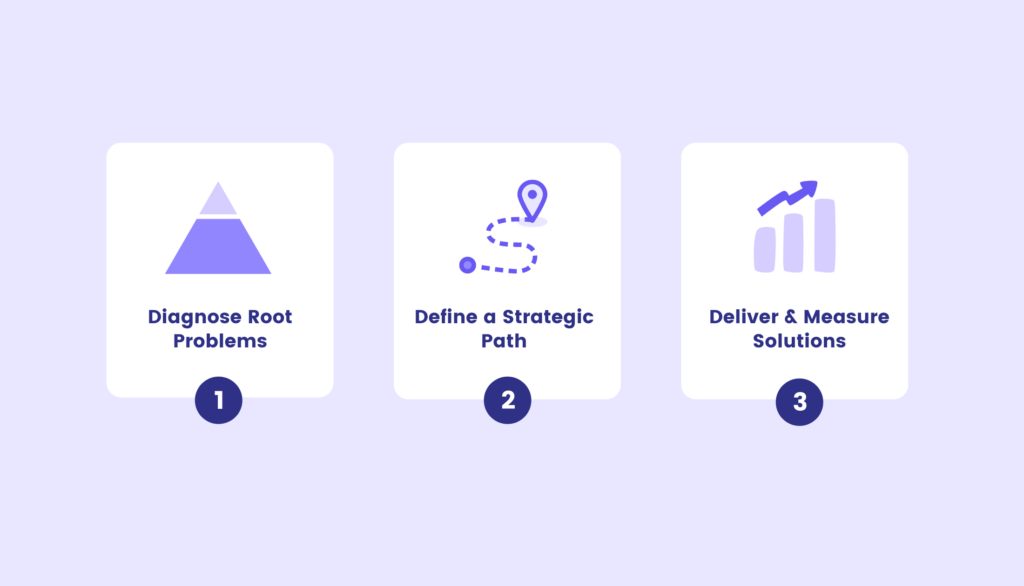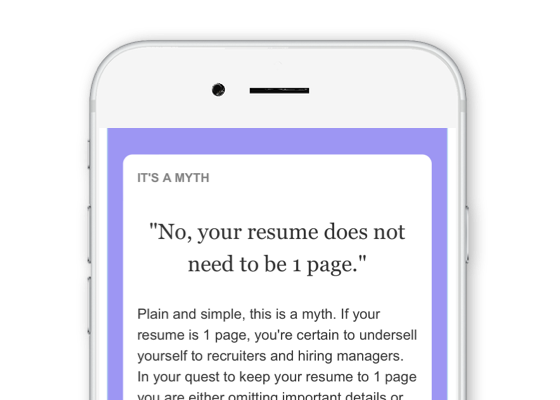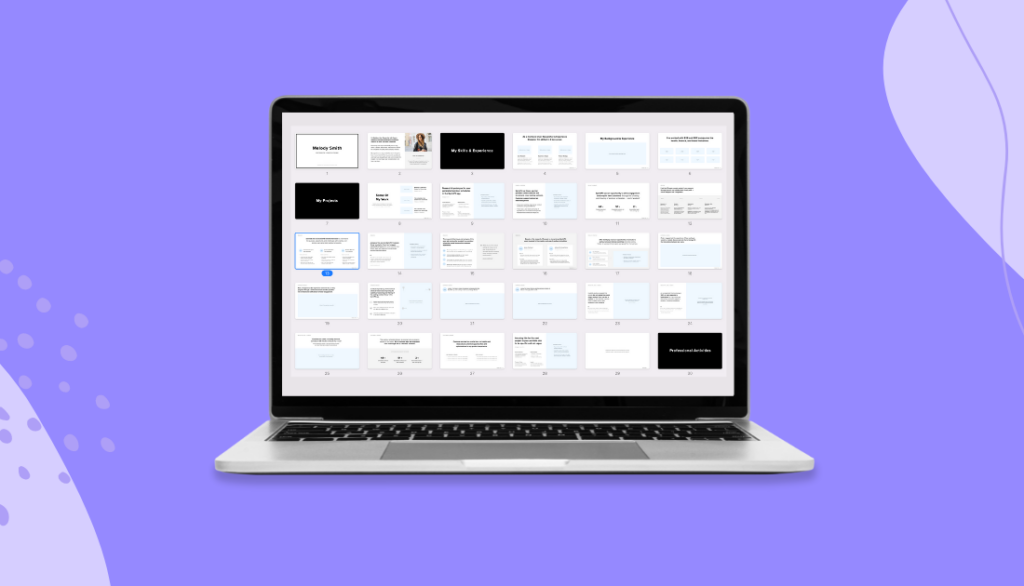14 min read
Get More UX Job Interviews: 3 Principles To Product Manage Your Job Search
13 min read
13 min read

Have you applied to 25, 50, 100 or more UX jobs and not landed any interviews or job offers? The solution is to not keep applying and hoping the numbers game will eventually lead to more interviews and job offers. Instead, you need to product manage your job search. Gambling with your job search defies so many product design and development principles and strategies. You and your team methodically research, strategize, design, test, and iterate the products you work on so you can make incremental progress and avoid wasting time making something people don’t want.
Unfortunately, many UX and product professionals fail to apply these same steps to their job search, interviews, resume, and portfolio. This is exactly why so many UX people spend months, or longer, searching and applying to UX roles and not getting interviews or offers.
Recently I asked a question on LinkedIn to understand what the journey of getting hired in UX looks like:

The answers helped confirm my suspicions, many UX and Product people have a very poor ROI of the time they put into their job search. When you do the math to understand just how many hours people are putting into UX job searches that are not leading to interviews and offers, it’s maddening! Reducing the time UX candidates spend on their job search is one of the key goals that drives the work I do inside Career Strategy Lab™.
Understand the ROI of Time in Your Job Search
Let’s take a look at some of the answers to my original post on LinkedIn to help quantify how much time UX people put into their job searches. First, we have Lindsey who recently graduated from General Assembly. So far, Lindsey applied to 30 roles and had 1 interview. That’s a 3% conversion rate for applications to interviews. On average, Lindsey estimates she spends 1 to 4 hours applying to each role. When we do the math, that’s a total of anywhere from 30 to 120 hours to apply to 30 roles.

Next, let’s look at Mark, a UX Researcher and Writer. Mark applied to 5 jobs in a month and spends 8 hours on each application. That works out to 40 hours of time invested to apply to 5 jobs. The result? So far, Mark hasn’t had any interviews.

These examples are meant to help quantify what many UX and Product people do in their job search and the numbers aren’t great. Let’s face it, you measure the products we work on. But, do you measure the efforts and results of your job search? I’d argue, most people don’t. Without accurate data, you can’t understand the reality of your situation. You may not like what the data tells you. But you cannot improve the results of your UX job search until you face the data.
If you want to get more job interviews and offers, you must product manage your job search. That starts with treating your UX job search with the intentionality, insight, and information-based decisions that a product manager uses when creating a product.
A great product manager doesn’t just focus on solving problems, they also constantly seek to spot small problems before they become big problems. When time and money are on the line, there’s no sense in solving a problem if you’re not confident it’s the right problem to solve. Product managers monitor, assess and act on vital information from across the organization to create a product that meets the needs and goals of all the stakeholders.
The 3 Thing Product Managers Do Well
At a high level, great product managers do 3 key things really well:
- Diagnose problems. Product managers constantly look for clues to help them spot problems and opportunities as soon as possible. They aim to find small symptoms early in a product’s lifecycle so they don’t encounter a massive problem down the road that leads to a costly pivot.
- Define a path forward. Product managers develop a customized plan to navigate and fix problems, build new features, and reach the end goal faster. They know a product roadmap is not always one-size-fits-all and that many variables contribute to what that plan may look like as new information and insights are uncovered.
- Deliver solutions & measure their success. Product managers always seek to gather and assess data and feedback to gauge performance of their team and product. Without this, everything is left to assumption and lacks proper context.
The massive irony in the UX industry is that when it comes to the UX job search most people largely disregard and skip these simple yet crucial steps of diagnosing problems, defining a path forward, and delivering solutions while measuring results. This is exactly why, as we saw from the LinkedIn responses earlier, so many UX people waste months, sometimes years, in their job search. So, what does it mean to be the product manager of your job search? Let’s take a deeper look at the 3 crucial things product managers do so you can identify some quick pivots to get more interviews and job offers without applying to hundreds of roles.
How to diagnose problems in your UX job search
If you’ve applied to 25, 50, or 100 UX roles and have not landed a single interview, you have to diagnose this problem so you can design a solution. Unfortunately, many people skip this step and instead spend exorbitant amounts of time playing the numbers game while continuing to not get more interviews. No wonder it seems like so many people’s confidence is on the decline and anxiety and imposter syndrome is at an all-time high.
Instead of diagnosing the root problems in their job search, many UX professionals go into panic mode and keep applying because they don’t know what else to do. In fact, some UX boot camps, education programs, and UX career coaches teach students to simply play the numbers game. Others even go as far as requiring students to apply to a certain number of jobs to qualify for ongoing career services support.
If a product manager stepped in to assess your job search and how your numbers game is going, their first goal would be to diagnose this problem and understand why you aren’t getting more interviews and more offers. To begin diagnosing the problem with your job search, a product manager might ask questions such as:
- Is the time you spend on your job search producing the results you want?
- Have you tested and optimized your resume, portfolio, LinkedIn, etc?
- Are you taking the time to customize your materials for each role?
- After you apply, do you follow up or do anything to nurture those applications?
- Do the roles you’re applying to truly align with your career vision, values, and goals?
- What have you done to build authentic relationships with people at the companies you’re applying at?
Based on the answers to these questions, a product manager would be able to isolate, identify, and prioritize possible areas to focus on in your job search and all related material and activities moving forward. Product managers aim to identify and diagnose problems early and often. Doing so helps reduce the risk that a product gets too far off course from the original vision, which can result in expensive and time-consuming re-work.
In the case of your job search, it’s crucial you diagnose problems early and often so you can invest your precious and limited time on activities that will actually make a difference and help you stand out so you can get more job interviews and offers.
How to define a new path forward in your UX job search
Equipped with the insight and information from diagnosing problems in your job search, a product manager would then help prioritize the changes a candidate like you may need to make. As tempting as it is to look at a to-do list and pick off the easy or exciting things first, that’s not the best strategy. Many tasks related to your job search depend and build upon each other. That’s why it’s crucial to strategically prioritize what you do in your job search.
To follow up from our previous example, when a job search is not garnering interviews, candidates often jump into a “redesign” of their portfolio or resume. No amount of visual design changes can save a portfolio or resume that, at the core, has surface-level or insufficient content. We really encourage our clients in Career Strategy Lab to write their case studies out as Google Docs first. This allows you to focus exclusively on the content and not be distracted by the visual design of your portfolio.
Another benefit is that once you are clear about the story and process for each project in your portfolio, you’ll already have a lot of the content you need for your resume, LinkedIn and even answers to interview questions! This will also allow you to drastically reduce the amount of time it actually takes to design your portfolio. When you have clarity about the content before you start designing your portfolio, you can stay focused on the design and approach it with more intention and context.
In product development, we strategically order projects and features so they inform and build upon each other. The same applies to the activities in your UX job search. It’s crucial that you are intentional about the order in which you do everything related to your job search. Don’t allow yourself to get drawn to the tasks that may seem fun or easy.
To help hold yourself accountable and avoid the temptation of jumping around your to-do list, it’s crucial that you make a project plan for your job search. Treat it like a real project with dates and deadlines. Every week, review the project plan to evaluate your process and re-order things as necessary. Without a clear plan, you will waste time every single day when you sit down and wonder “what should I work on today?”
The Financial Impact of an Unnecessarily Long Job Search
It’s also important to be mindful of the consequences of what happens if you don’t stick with the plan. For example, every week that you are not applying is another week that you’re not earning the higher salary you’re capable of earning. Let’s imagine you are looking for a UX role and it takes you 9 months to get hired. So you’re earning your current salary for 8 months and then in month 9 you start earning your new, and higher, salary!

Now let’s see what happens if you reduce the time it takes to get hired. If you get hired in 6-months instead of 9-months you end up earning 2 extra months at your new, higher, salary! There are tangible financing impacts to how long it takes you to get hired into a new UX role. Understanding the

In your UX job search, when weeks turn into months, all that time can add up to thousands or even tens of thousands of dollars in terms of earning potential. By having a clear plan for your job search and understanding the consequences of not following the plan, you will be more motivated to make progress and stop procrastinating.
How to measure the success of your UX job search
Too many UX professionals only focus on the metric of how many interviews and job offers were secured. There are so many more things to measure to help you gather information about the impact of the activities in your job search.
Instead of only measuring whether you get interviews or job offers, it’s crucial to first measure the effectiveness of your career materials. When we work on features for products, we often conduct usability tests to evaluate if people can use the features. The same applies to your portfolio and resume.
When it comes to gathering feedback about their resume and portfolio, most people just send an email to people in their professional network or SOS on social media and say “what do you think of my portfolio?” Unfortunately, that often leads to no response or vague advice. Instead of doing this, candidates should conduct a proper usability test on their resume or portfolio. Or at minimum, ask more specific questions to help improve the quality and usefulness of the feedback they receive. You will drastically increase the quality of the feedback you receive if you moderate a short talk-through with them and observe them trying to navigate your portfolio, find information on your resume, and read aloud as they skim through your materials.
In the job search, many UX professionals only track metrics such as number of jobs applied to, interviews received, and offers received. There are so many small steps candidates can take to help themselves stand out in the sea of applicants. Simple things such as sending a follow-up after an interview or writing a cover letter can sometimes help interviewers, HR people, and hiring managers remember you. For every job you apply to, it can be helpful to track whether you did these activities as a way to hold yourself accountable and to truly see the impact of how sending a cover letter or thank you email might actually lead to more interviews or even offers. In product development, we measure things to help us see the impact of changes we make. Metrics help us understand where to focus our efforts and can also help us measure the ROI of our time and energy. Your job search is no different!
To improve your job search you have to pivot
Too many UX and product people are stuck in roles that have left them in a skills plateau, at companies that don’t align with their values, and not earning the salaries they deserve. Getting your next UX or Product role should not involve applying to hundreds of roles and playing the numbers game. You are better than that. You are a professional and should not leave your job search to chance.
If you want to take matters into your own hands, you must take ownership of your UX job search, starting today. The first step is to adopt a product manager mindset and commit to diagnosing problems, following a strategic plan, and measuring everything. Your future is created by what you do today. Decide right here, right now, to have an honest conversation with yourself about your career. If what you’ve been doing in your UX job search so far has not resulted in interviews and offers, then something must change. But it’s up to you. You’re the only person who can decide to pivot and make that change.









